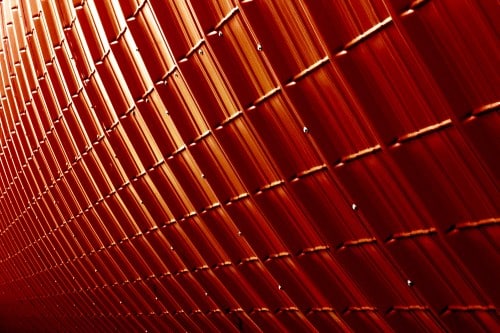Sustaining or not sustaining - that is the question?

The need for sustainable solutions is considered one of the drivers for the growth of the biomimicry field. But do biomimetic solutions necessarily also exist?
This issue occupied a group of researchers from Germany, who recently published a first and comprehensive study dealing with a systematic sustainability assessment of an existing biomimetic solution.
The sustainability assessment was based on the PROSA (product-specific sustainability assessment) method
When the biomimetic solution was compared to alternative, non-biomimetic solutions.
The biomimetic solution evaluated is from the field of architecture. It is a ribbed ceiling in a lecture hall, built in 1960 at the University of Freiburg in Germany.
The source of inspiration for the development of the ceiling is a hollow bone, where the relationship between the structure of the bone and its mechanical properties was studied and translated into a model of tensile and compressive forces. Bone, as we know, is a spongy and hollow structure, which excels in strength relative to its weight. The loads are distributed in an optimal way. The material of the bone actually exists in places where resistance to loads is required.
The Italian architect Pier Luigi Nervi was the first to adopt the light weight principle of the bone and translate it into a rib-like structure, which provides strength on the one hand and saves material on the other. In the patent registered in this development context, the biological model (the bone) is explicitly stated. This principle was adopted by the architect Hecker in 1960 and applied to the ceiling of the lecture hall at the University of Freiburg. The result is a strong and light ceiling.
This biomimetic ceiling was compared to two other ceilings. The assessment included reference to all dimensions of sustainability, including the social, economic and environmental dimensions. For this purpose, a benefit analysis, a social analysis, and a product life cycle analysis (LCA) were performed to examine environmental effects. The results show that even though the ceiling was built in 1960, it outperforms newer lightweight ceiling solutions in terms of its sustainability.
This case strengthens the claim about the connection between biomimicry and sustainability. The researchers suggest continuing to use the PROSA methodology to assess the viability of additional biomimetic solutions.

One response
Isn't it a bit hasty to draw a conclusion from one case?